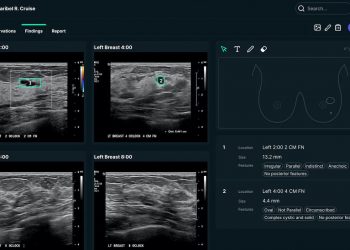Winter is coming. Again. For the past two years, colder temperatures have brought seasonal COVID upticks, which turned into massive waves when ill-timed new variants emerged. In Western Europe, the first part of that story certainly seems to be playing out again. Cases and hospitalizations started going up last month. No new variant has become dominant yet, but experts are monitoring a pair of potentially troubling viral offshoots called BQ.1 and XBB. “We have the seasonal rise that’s in motion already,” says Emma Hodcroft, a molecular epidemiologist at the University of Bern, in Switzerland. If one of these new variants comes in on top of that, Europe could end up with yet another double whammy.
The U.S. may not be far behind. America’s COVID numbers are falling when aggregated across the country, but this isn’t true in every region. The decline is largely driven by trends in California, says Samuel Scarpino, the vice president of pathogen surveillance at the Rockefeller Foundation’s Pandemic Prevention Initiative. In chillier New England, hospitalization numbers have already ticked up by as much as nearly 30 percent, and more virus is showing up in wastewater, too.
There are a couple of reasons to be more optimistic about this winter compared with last. The U.S. is just exiting a long and high COVID plateau, which means there is a lot of immunity in the population that could blunt the virus’s spread. An estimated 80 percent of Americans have had Omicron in the past year. And BQ.1 and XBB are not overtaking previous versions as quickly as Omicron did last winter. They seem unlikely to cause a winter surge as overwhelming for hospitals as the original Omicron wave, though a full picture of their severity and ability to reinfect is still emerging. (Both of these new variants are descended from Omicron: BQ.1 comes from BA.5, and XBB comes from two different BA.2 lineages that recombined into one. Confused by all these letters and numbers? Here’s a guide to understanding lineage names.)
Lab data tell us that both subvariants are capable of substantial immune evasion. XBB is already driving a surge in Singapore. BQ.1, and its closely related descendant BQ.1.1, are rising in Western European countries and now account for about 8 to 10 percent of cases, according to Hodcroft—but they are probably not widespread enough to explain why COVID rates were already going up. Several countries in the region may have already hit a peak for now, but as BQ.1 and BQ.1.1 become more prevalent, they could jump-start another wave.
The variant situation this winter could look different from past ones. Unlike previous winters, when Alpha and Omicron took clear paths to domination, now “there is this soup of variants,” says Tom Peacock, a virologist at Imperial College London. One of these might come to monopolize infections in certain parts of the world, another elsewhere. BQ.1 and XBB are distinct enough from each other, Peacock says, that they could end up co-circulating, or not. It’s too early to say for sure. We could also get another unwelcome surprise, he adds—just as Omicron upended our winter expectations last Thanksgiving.
With a few more weeks of data, the real-world severity and reinfection rate of BQ.1 and XBB will be clearer. Still, our window into COVID reality is foggier than ever. As governments have ramped down COVID mitigations, they’ve also ramped down surveillance. “The data going into these models is far poorer because we aren’t sequencing as much,” Peacock says. In the U.S., the data we do have suggest that BQ.1 and BQ.1.1 account for about 10 percent of cases. Case numbers are also less reliable because of the rise of at-home testing, which generally doesn’t get officially reported.
Comparing across regions is becoming harder too. Back in March 2020, every country started with virtually the same amount of immunity against COVID: none. Since then, we’ve all been diverging immunologically from one another. South Africa, for example, had a large Beta wave that didn’t hit Europe. Europe saw a large and distinct BA.2 wave that never materialized in the U.S. And now countries are administering a mix of BA.1 and BA.5 bivalent boosters, depending on availability, and offering boosters to different segments of their populations. As we’re already seeing in the U.S., even different parts of the same country are likely to experience this COVID winter differently. “What’s happening in Boston is not what’s happening in L.A.,” Scarpino says. For communities to respond to the situation on the ground, “we have to have more real-time, locally relevant information.”
Source by www.theatlantic.com











